Gazania (gatsania): description and varieties, planting and care

Gardeners consider gazania to be one of the brightest and most beautiful horticultural crops. This plant has lush, bright inflorescences of fiery, pink and white hues, and looks very much like an enlarged version of chamomile. In this article, you will get acquainted with the description and the main varieties of this flower, as well as the features of planting and caring for gazani.

Description
Gatsania (gazania) is a perennial or annual herb of the Aster family, which is distinguished by its relatively short stature, a short stem with pale green leaves and characteristic white villi.
These plants are called "African daisies" by gardeners, as their inflorescences are similar in shape and color saturation to classic yellow daisies.
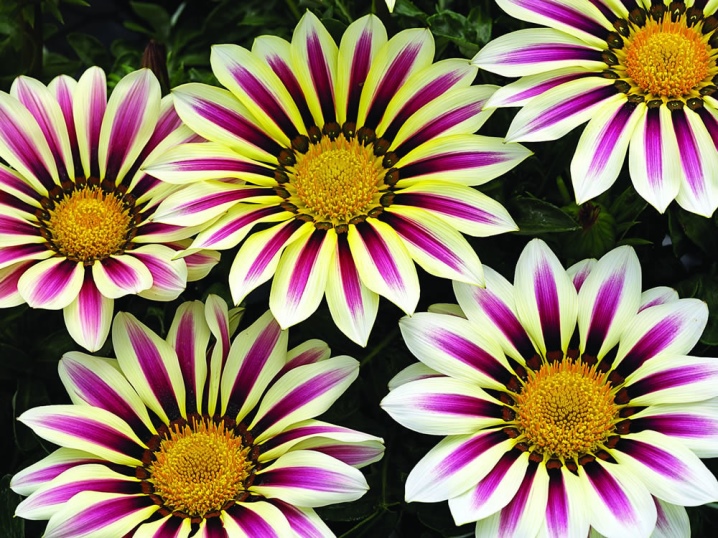
Gazania flowers can grow up to 10 cm in diameter and have an elongated reed shape. Depending on the variety and species, these plants can be yellow, white, bronze, orange or red, however, each such plant has flower leaves near the base with rich dark specks. Each adult gazania bush can form up to 30 inflorescences with bright buds per season.
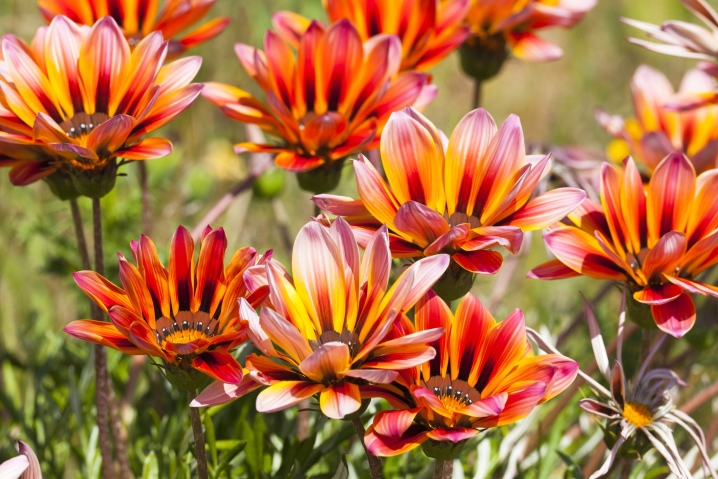
Perennial or annual?
Many gardeners cannot agree on what type of plant a flower such as gazania belongs to. Some are convinced that this is an annual that cannot withstand long winters. Others consider this plant a unique perennial, which only needs proper care during wintering.
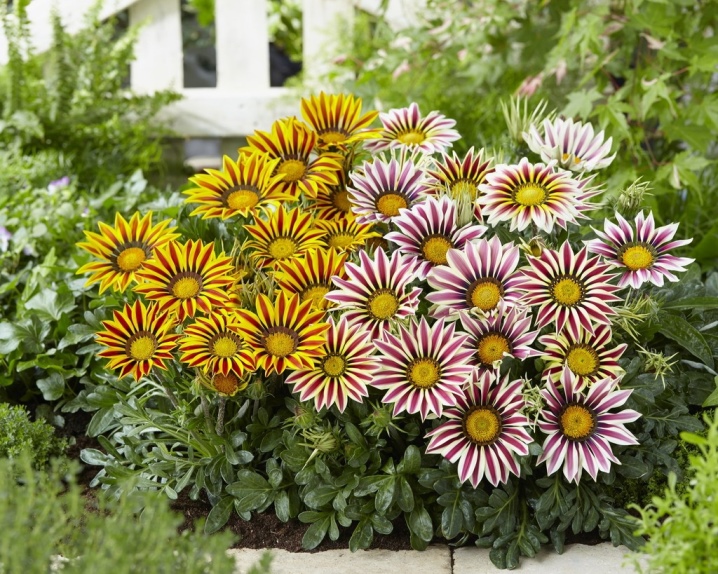
To solve this issue once and for all, it is enough to remember where this extraordinary bright flower came from.
The fact is that in their homeland, in South Africa and Mozambique, these plants could bloom unhindered throughout the year under the constant warm sun.
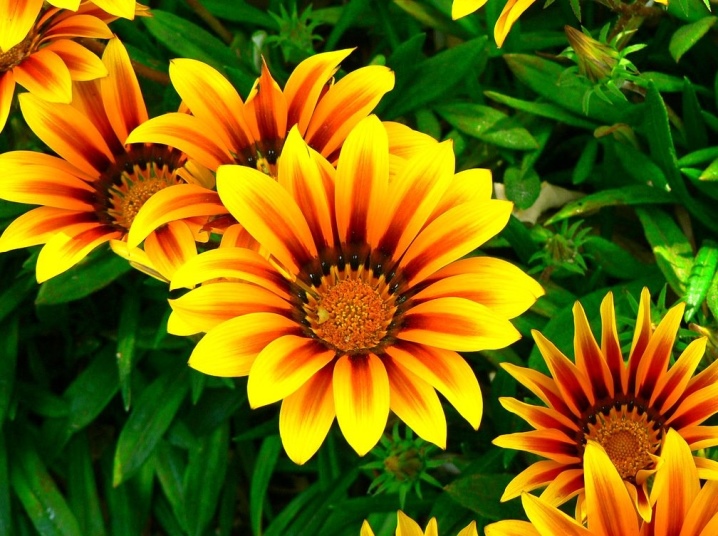
If we talk about the cultivation of this plant in Russia, where protracted and frosty winters are not uncommon, then here for a favorable wintering of this perennial, a number of conditions must be observed.
- In the fall, after flowering, you need to carefully dig out a gatsania bush along with an earthen lump. In this case, you need to try not to damage the root system.
- After that, the bush is planted in a deep pot with a good drainage layer.
- Since gazania belongs to exclusively light-loving plants, it should be placed in a well-lit place (on a windowsill, as an example) or provide it with additional lighting.
- During such wintering, the plant should be fertilized several times with mineral fertilizers, watered and vigilantly monitor the temperature in the room. It should not drop below 10 degrees.
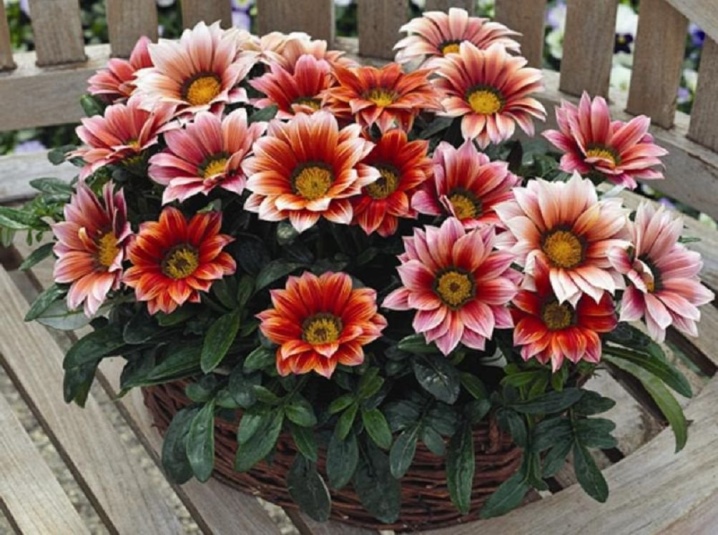
Types and varieties
There are 5 varieties of garden gazanias.
- Gatsania is harsh (or shiny). A popular variety of orange, pink or bronze flowers up to 30 cm high and with a diameter of inflorescences up to 10 cm. It has narrow greenish leaves.
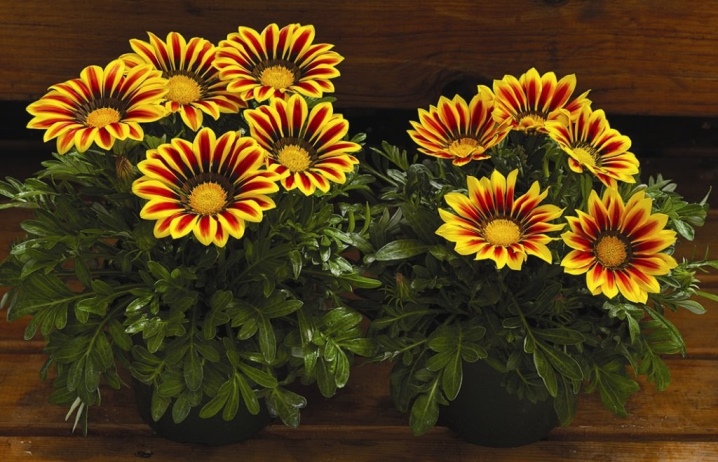
- Gazania is hybrid. This includes all varieties of a wide variety of shades with a height of up to 30 cm (including terry varieties). The plant has narrow linear leaves and blooms until frost.
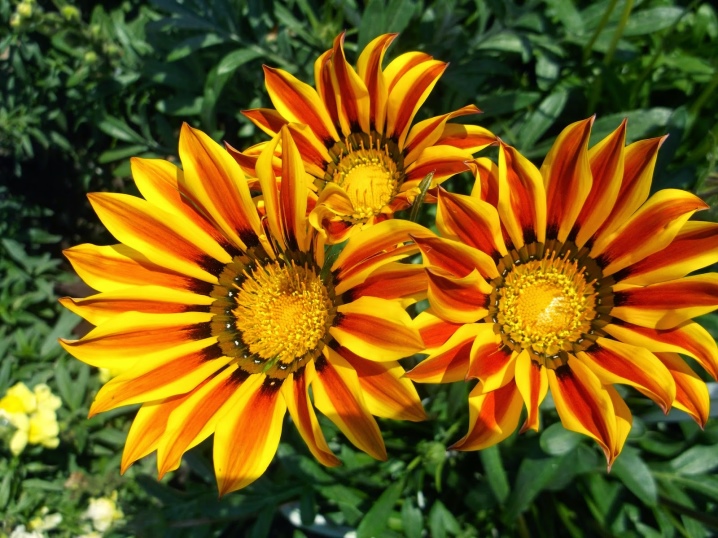
- Long rifle gatsania. Annual variety up to 20 cm high.A distinctive feature is bright yellow buds with a beige base and a diameter of up to 7 cm, as well as slightly cut leaf plates in the root zone.
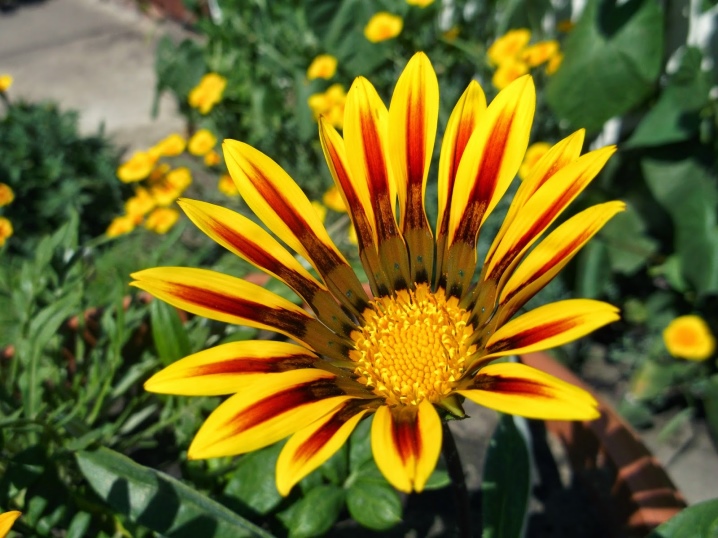
- Peacock Gazania. It differs from other varieties in long and narrow leaf plates up to 20 cm long. The flowers of the plant, as a rule, have a bright orange or yellow color.
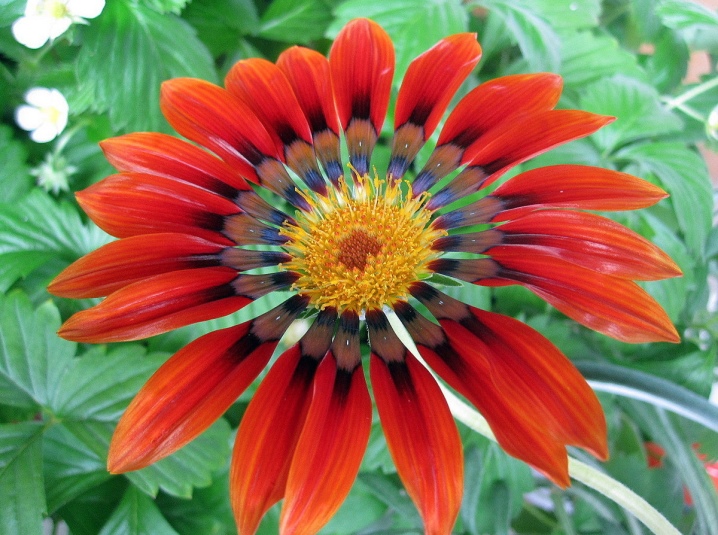
- Gatsania is linear. It is a perennial plant up to 15 cm high, with dense and strong elongated stems, as well as narrow leaves of rich green color. Inflorescences are yellow or golden, up to 7.5 cm in diameter.
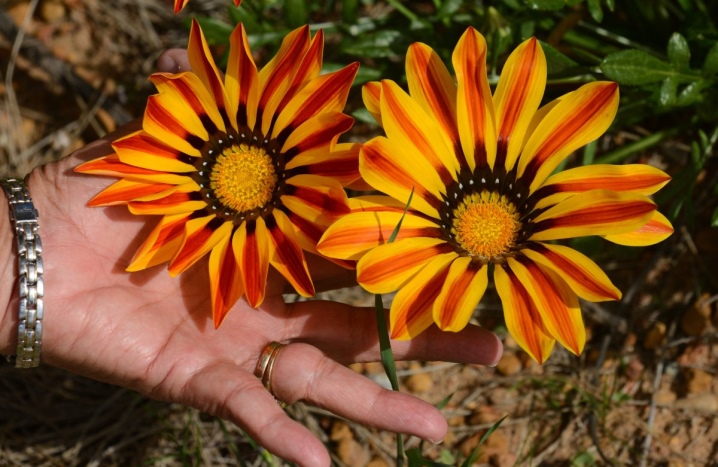
If we talk about the most common varieties of culture, then most often they are grown in Russian gardens Garden Star, Muse, Triad, Frosty White, Sunshine, Talent, New Day, Big Kiss, Sunshine and Legend... Some of them include several separate varieties, while others are collections of gazania (for creating multi-colored flower beds).
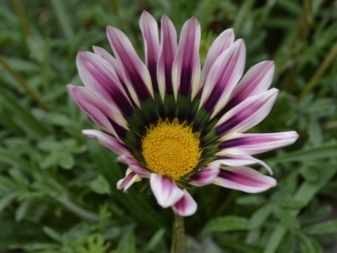
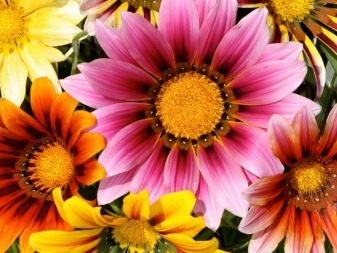

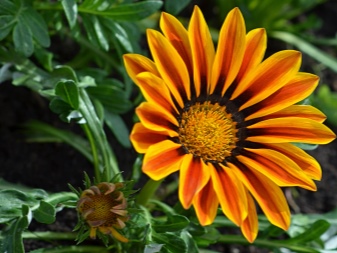
We take into account the climate
Gatsania is a very thermophilic plant that loves the sun and does not tolerate sudden changes in temperature or even minimal frost. In southern latitudes, such plants can grow and bloom almost all year round. - they are able to withstand high temperatures up to +35 degrees.
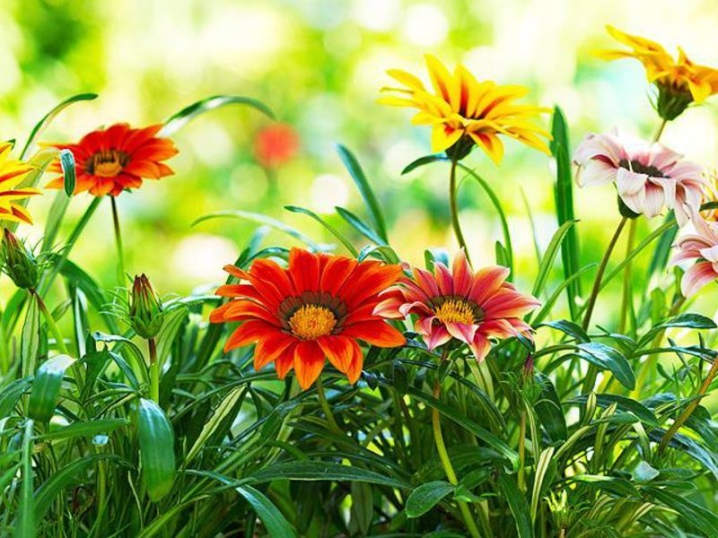
If we talk about the cultivation of this flower in the northern regions (Moscow region and Siberia), then here the plant will feel great in spring, summer and autumn at almost any temperature and weather, however, for the winter must either be cut or dug up and stored at home.
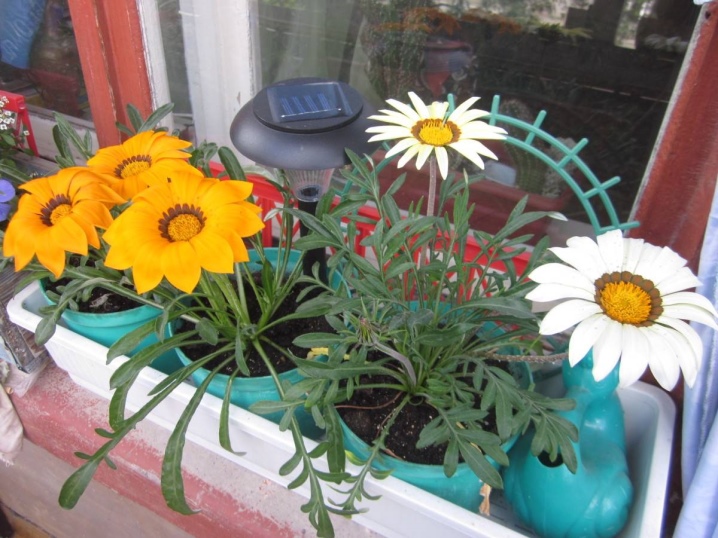
The lower temperature threshold for adult gatsania bushes is -7 degrees Celsius. If we are talking about young bushes or varieties with low frost resistance, then without special care they will not survive even the warmest winter.
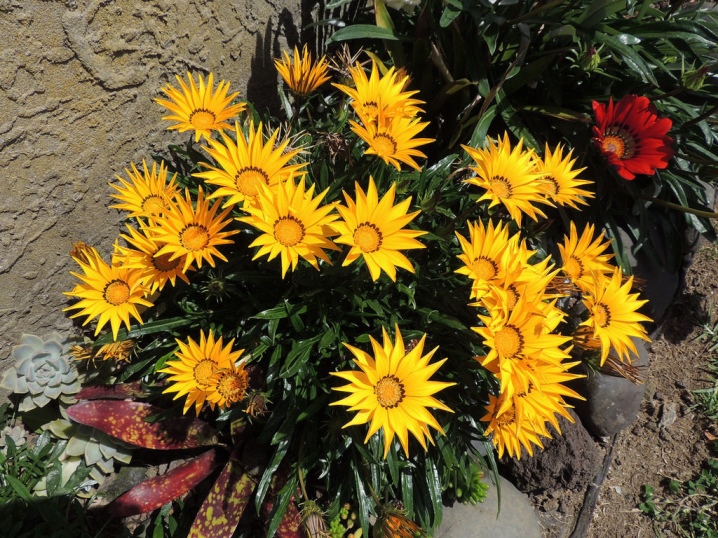
How to plant?
Planting of young gazania seedlings in open ground is usually carried out in early or mid-May. These garden plants should be planted in a well-lit area away from large shrubs and trees.
Gazanias can grow on almost any type of soil, however, it should be light, nutritious and rich in vitamins.
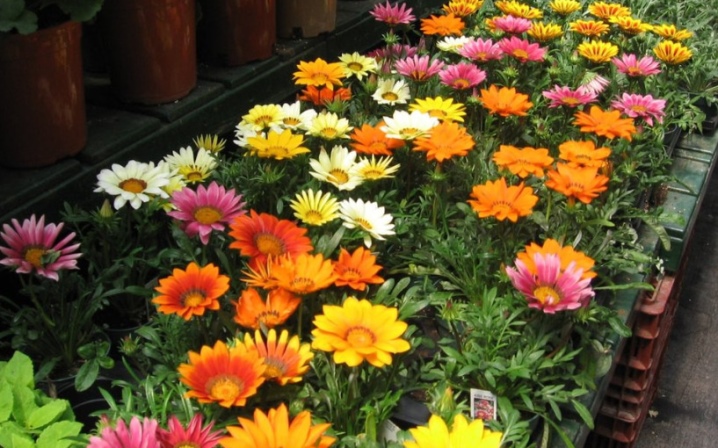
The pits for planting gazania should be at least 20 cm deep and have a good drainage layer. Plants should be planted at a distance of at least 20 cm from each other. Before planting the hole, you need to water it well.
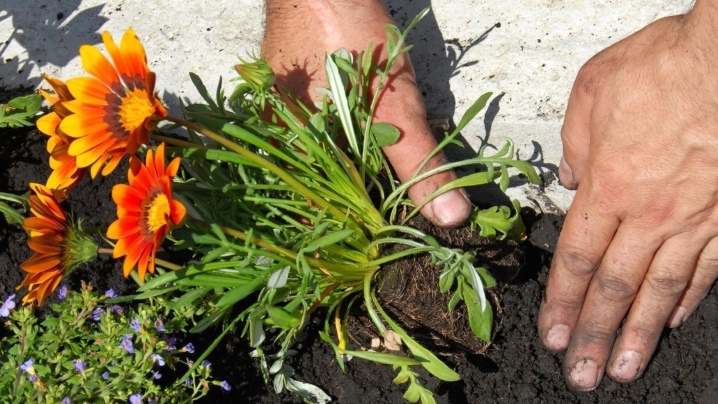
If you bought gazania seedlings in peat pots, then the seedlings can be planted in open ground with them - for the roots of the plant, this will be the best option. To painlessly remove the plants from the pots and not snag the roots, use the spatulas. It is not worth shaking off a clod of earth from the roots. If all procedures are carried out correctly, blooming of gats can be expected in the same year.
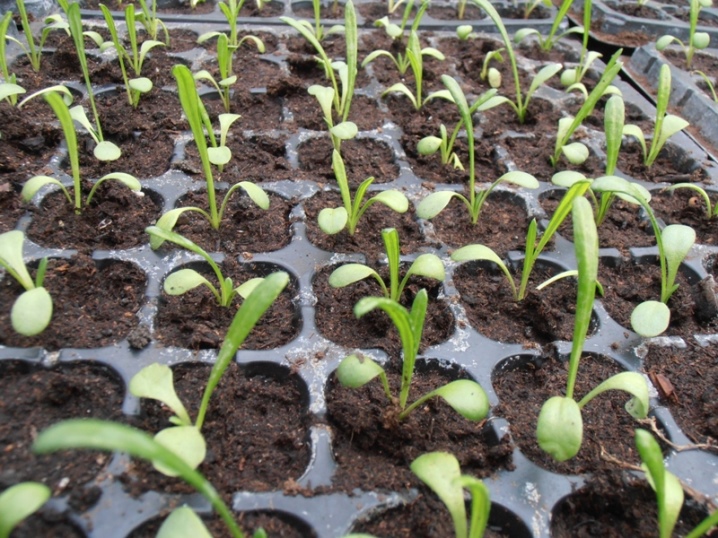
Correct care
When growing gazania, it is important not only to correctly plant the plant, but also to organize proper care of the seedlings. In the first months after planting, gatsania seedlings are under severe stress, and therefore need to be looked after regularly.

Watering
Gazania belongs to garden plants that are able to endure even the driest periods. If the weather conditions are favorable, and the soil in the near-trunk circle near your gazania does not dry out, watering can be carried out no more than 2-3 times a month.
What should be avoided when watering is stagnation of moisture at the trunk and roots of gatsania. An increased level of humidity can lead to rot, slugs and snails on its shoots or roots.
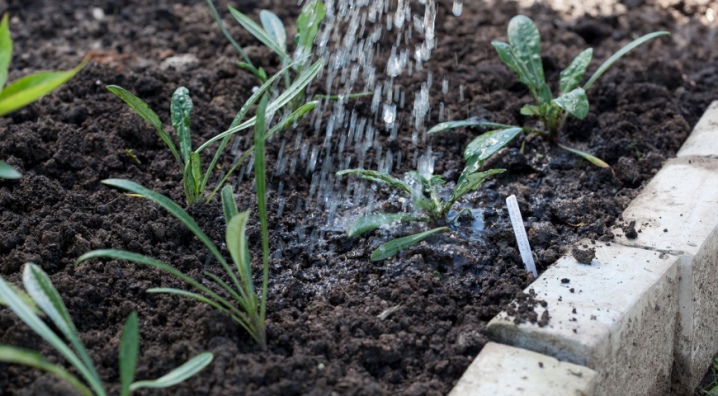
Pruning
To get the most lush flowering from gazania, you should cut off the already wilted buds of the plant as often as possible. Dry shoots, buds and stems will draw nutrients and moisture from the ground to stimulate young buds to bloom.
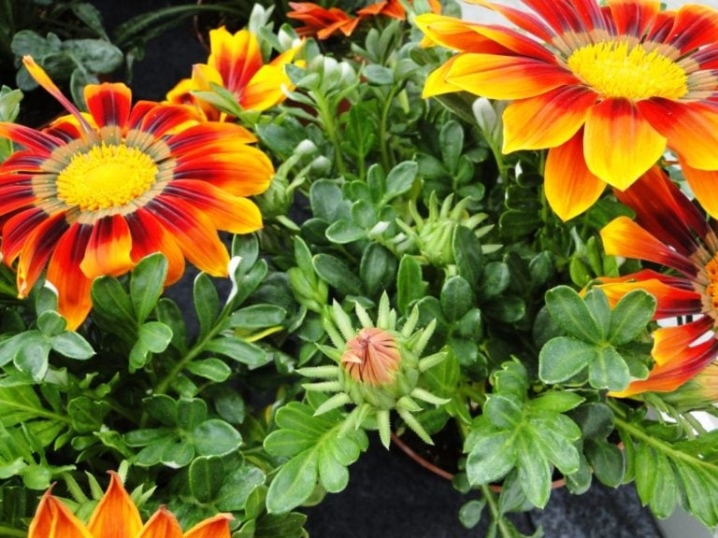
Top dressing
Gazania refers to plants that need regular feeding. Vitamins and minerals stimulate root growth and prolong the flowering period of the crop.
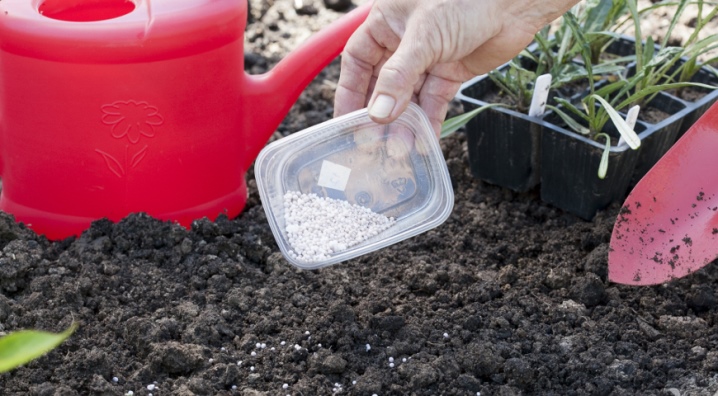
Besides, these flowers are capricious towards depleted and heavy soils, as well as soils with a high content of sandy loam and stones... If gazania are planted on depleted soil, fertilizing in the form of mineral fertilizers should be applied every 20 days.
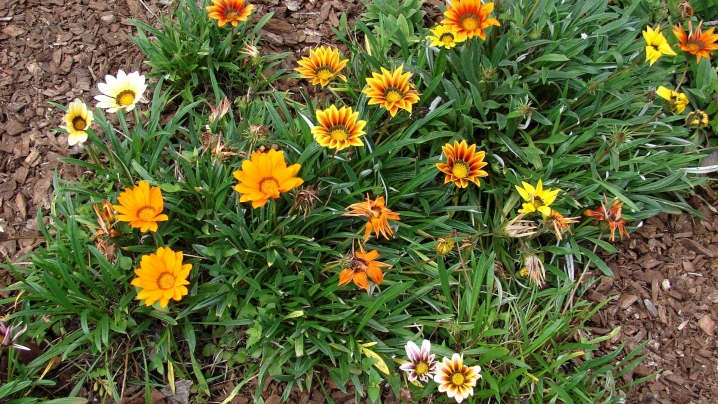
If your flowers are planted in a fertile, nutritious and vitamin-rich soil, top dressing should be done every month.
To fertilize 1 square meter of garden land with gazania, no more than 25 grams of any mineral fertilizers are required.
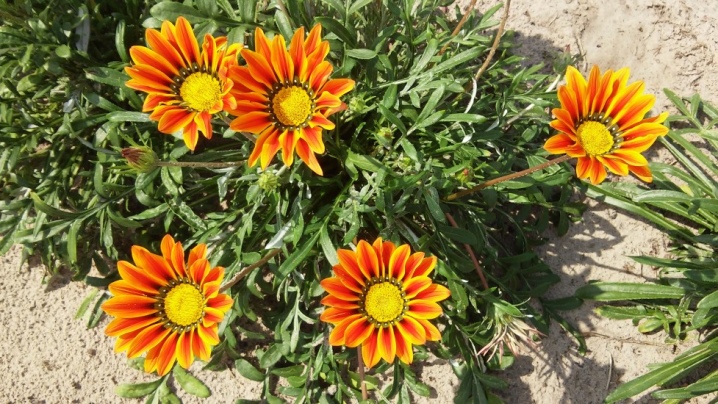
Priming
To make gazania feel as comfortable as possible in a permanent place, the soil in their near-trunk circle should be weeded regularly, and also loosened... This will improve the air and water permeability of the soil and help create a strong root system for the plant.
In addition, so that the soil in the near-trunk circle near the gazania does not dry out ahead of time, gardeners are advised to organize a thick layer of mulch from needles, straw, peat or compost.
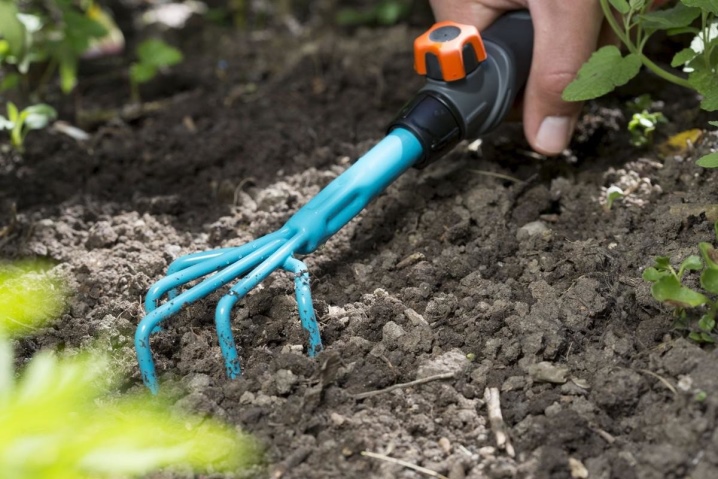
Transfer
After wintering gazania at home in containers or pots, it should be planted in a new place, where the plant will stay until the next autumn frosts. When choosing a container for gazania preference should be given to not particularly large, but necessarily deep pots, since this plant has a root system not of a branched, but of a rod type.
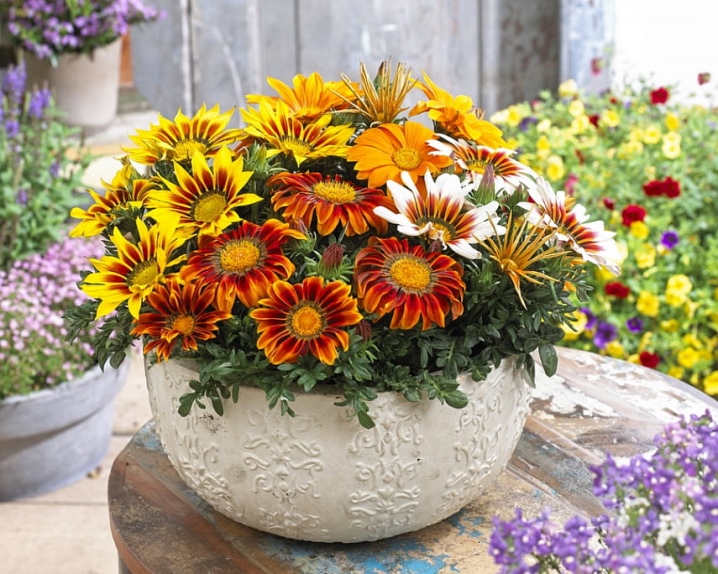
To make the plant less painful to survive the transplant from the pot into the open ground, it can be planted in the holes along with the mother's lump of earth (this method is called transshipment).

Growing at home
If you decide to grow gazania seedlings at home, then the safest way to do this is to use seeds. To make this procedure quick and effective, follow the guidelines below.
- The planting time for gazania seeds is not strictly defined - it all depends on the type of plant and climatic conditions in a particular region. Some gardeners are convinced that planting seeds in a container should not be carried out earlier than March, others are more inclined towards February or even May, but in the latter case, one should not expect early flowering from gazes.

- The main problem of growing this crop at home is the lack of natural light and heat, which are necessary for the active growth of such plants. To do this, place phytolamps over the container with seeds and, if possible, install it in a warm place without drafts.
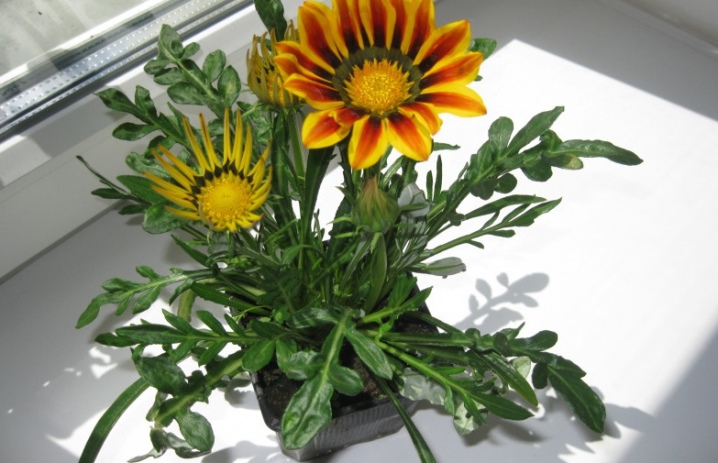
- For planting seeds, it is best to use neutral or slightly acidic soils with a nutrient composition. The soil should be light, moisture and air permeable. In addition, a drainage layer must be placed in the container before disembarking.
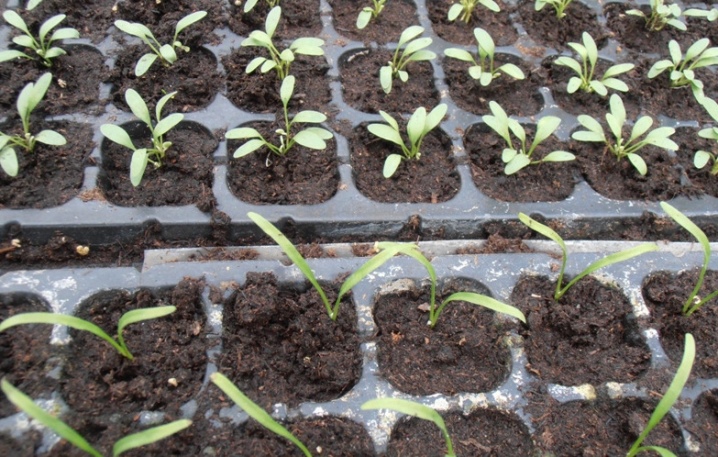
- Plant gazania seeds at least 3 cm apart. After that, the seeds must be carefully sprinkled with soil or simply pressed against it with your palms.

- After that, the containers with seeds are regularly sprayed with a spray bottle and covered with a transparent film. Condensation will regularly accumulate on the inside of the film - it should be removed.
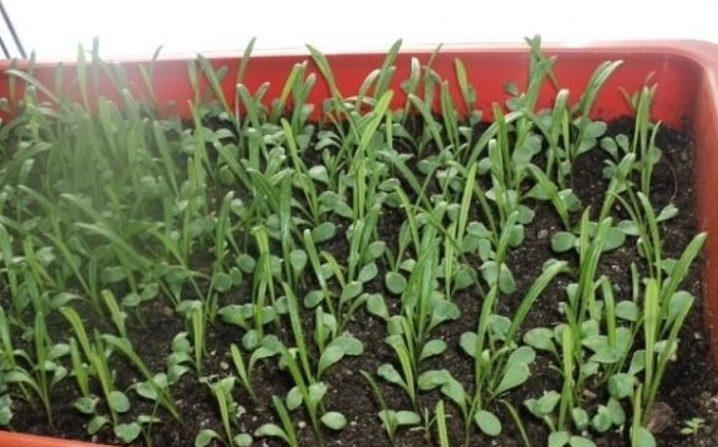
- If all the described procedures were correct, after 1.5-2 weeks you will notice the appearance of the first shoots. As soon as they have 2-3 full-fledged leaves, the film is removed from the containers. They should be placed in a place with good lighting, but no direct sunlight.
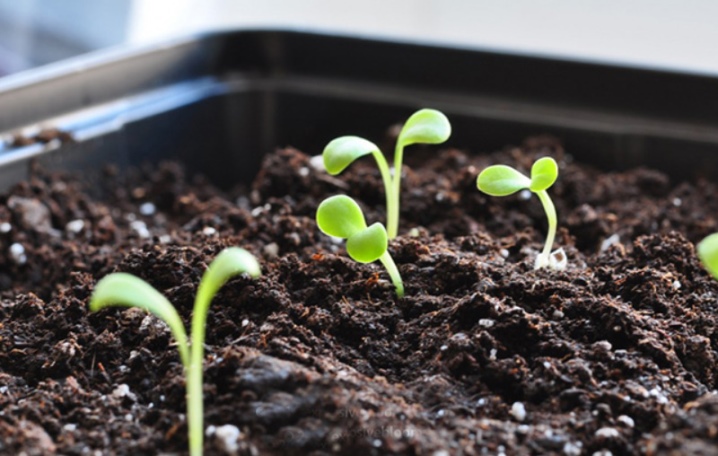
- The picking procedure should be carried out no earlier than 4-5 full-fledged leaves appear on the sprouts. During the picking, the seedlings are transplanted into separate containers - usually these are peat pots. Until the seedlings are planted in open ground, the seedlings should be fed several times with mineral fertilizers.
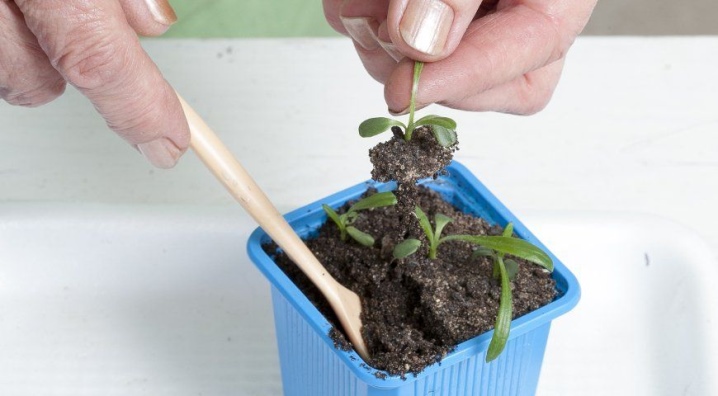
Reproduction methods
Gazania, regardless of the variety and variety of this plant, reproduces in three ways: seeds, cuttings and dividing the bush.
Growing gatsania with seeds is the most popular and safest breeding method.
It allows you to completely control the growing process, to apply fertilizers to the soil of plants at any stage of flower growth, and also allows you to provide optimal climatic conditions for plants from the very first day.
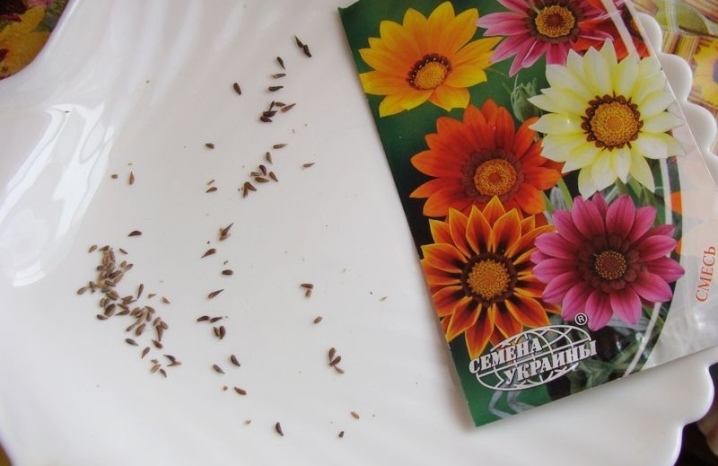
Propagation of gatsania by cuttings is used only if hybrid varieties of these plants are planted on the site, which are not capable of producing healthy seeds. Collecting cuttings takes place in the middle of summer - it is at this time that small lateral shoots appear at the rosettes of this plant. The bush should be cut using a sharp garden knife or an ordinary pruner. Each cutting at least 10 cm long should have a characteristic "heel".
Since the cuttings will sink directly into the ground, all the leaves near it should be cut off, and the cut site itself should be treated with a rooting stimulator.
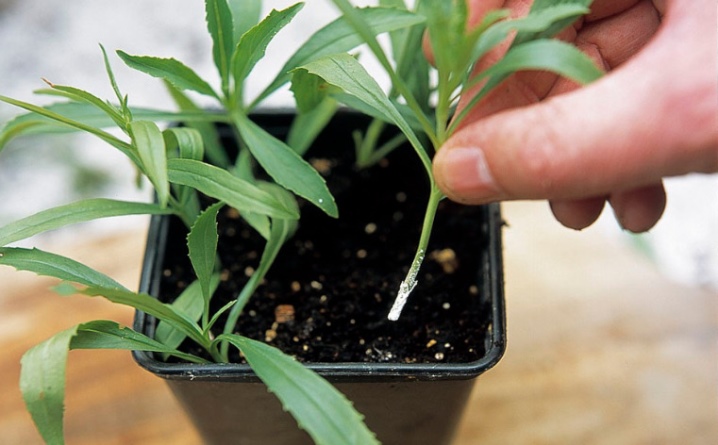
In order for the cuttings to form a root system faster, they can be kept in a growth regulator solution for about a day. Usually, a solution of naphthylacetic acid (0.1%) or indolylbutyric acid (0.5%) is used for this.
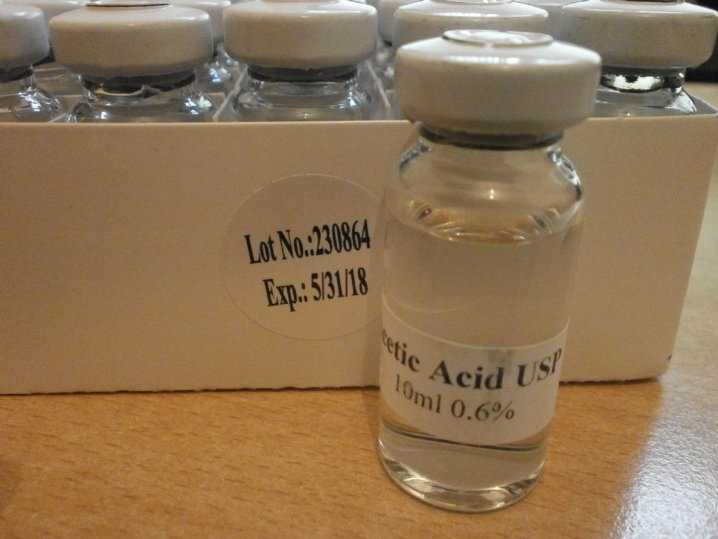
To make the cuttings feel most comfortable in a new place, they should be planted in small but deep containers with nutrient soil and a drainage layer.
For the next 2 months, the cuttings should be kept in a warm place with good lighting and ventilation. During this period, root formation occurs, therefore the plant should be fed at least 2-3 times with mineral fertilizers, and also watered regularly.
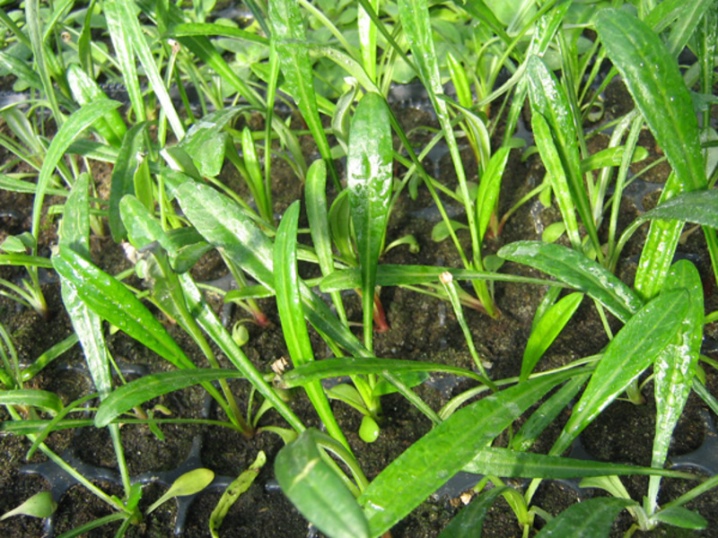
As an alternative breeding method, you can resort to the method of dividing the gatzania bush. This procedure is carried out in the summer. During her the bush should be dug out of the ground and the root system should be cleaned as much as possible from soil... An adult gazania shrub consists of many shoots grown together, which should be separated so that each has its own root system and developed leaves.
Only adult, healthy and beautiful gatsania bushes should always be divided.
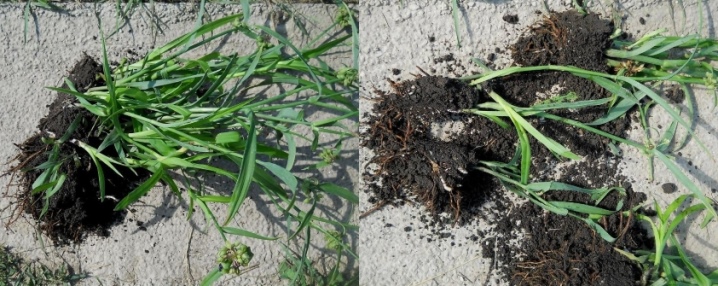
Why doesn't it bloom and what to do?
Some gardeners are faced with a problem such as the lack of gazania flowering. There can be several reasons for this phenomenon.
- The most unlikely, but possible reason for the lack of flowering may be the infection of the plant with various viral infections. Some of them not only affect the appearance of the plant, but also inhibit its development, deform the inflorescences, shoots and leaves of the flower. Such viral diseases can be transmitted through soil that has not been disinfected after an infected plant, or through certain pests such as aphids or ticks. It is also possible that the plant is simply sick and directs all its strength and juices to fight the disease or to grow a strong root system.
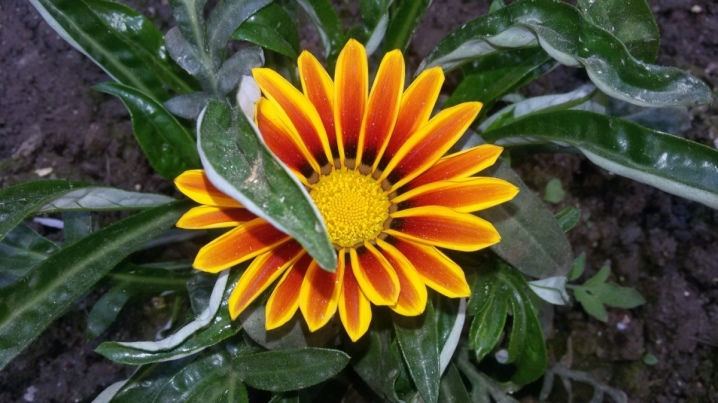
- The second most likely reason is ignorance of the variety and type of gatsania. Some northern growers often buy the seeds of this plant from their hands or from local markets. During such a purchase, there is a risk of acquiring late-flowering varieties of this plant. In addition, some varieties of gatsania thrive in the sun, while others, on the contrary, thrive in the shade.
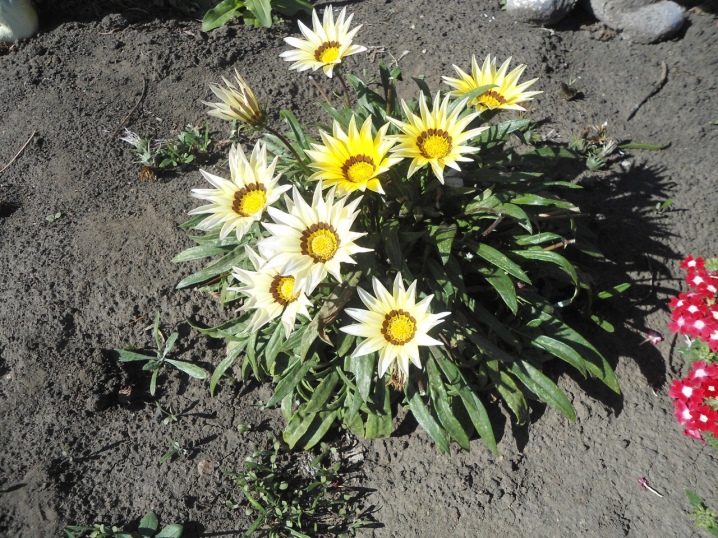
- Often, the problem of the lack of flowering is that the plant simply does not have time to bloom in a permanent place due to the wrong time to start growing seedlings. In the case of other garden plants, this procedure is advised to be carried out in the first months of spring, while gazania seedlings can be started as early as February.
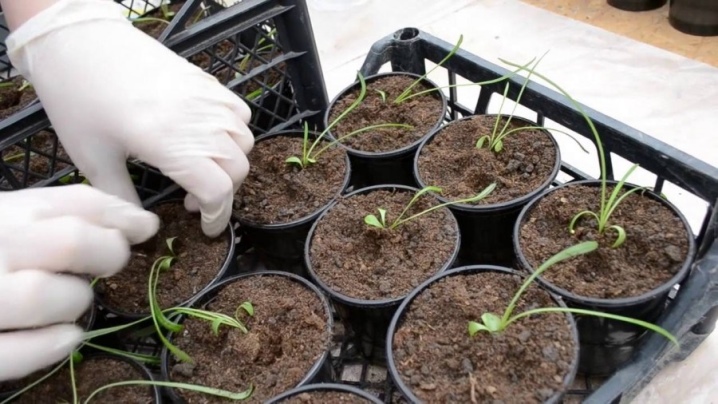
- As has been repeatedly noted, gazania refers to light-loving plants, and therefore a prerequisite for a more abundant flowering of these plants is natural sunlight. However, such plants should not be planted in open areas - from too aggressive sunlight, gazania leaves may turn pale.
The best place to land it would be an area open to sunlight in the morning and evening.
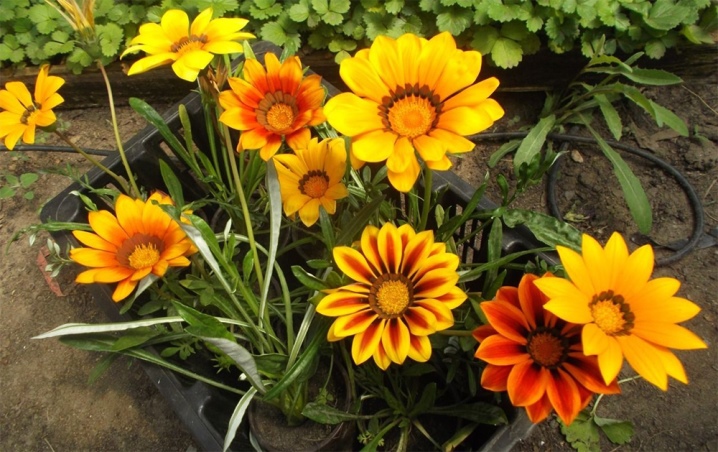
Diseases and pests
If the gazania withers, you notice cobwebs or blackheads on the leaves of the plant, most likely, it has become ill or has become a nest for garden pests.
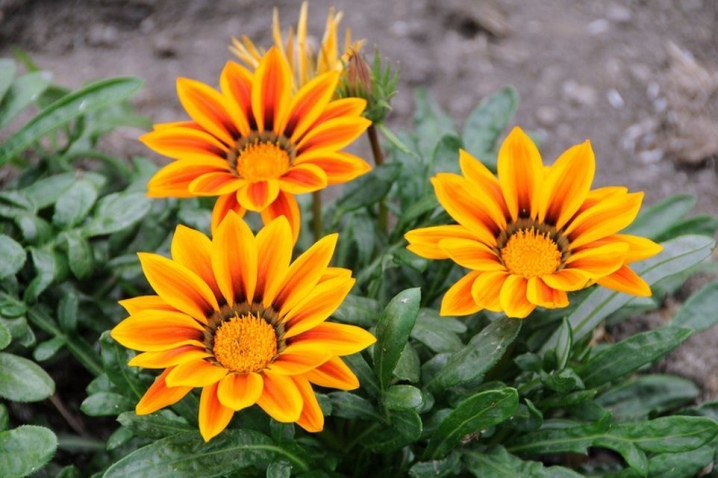
Despite the excellent resistance to many diseases, on gatsania you can occasionally notice signs of fungal diseases - powdery mildew, gray rot and spotting. Many fungi and viruses are transmitted to the plant through insects or soil. If the disease is local and spreads only to certain stems, the plant is treated with fungicides.
Experienced gardeners also recommend treating all nearby plants with them, as well as disinfecting the soil with Fitosporin.
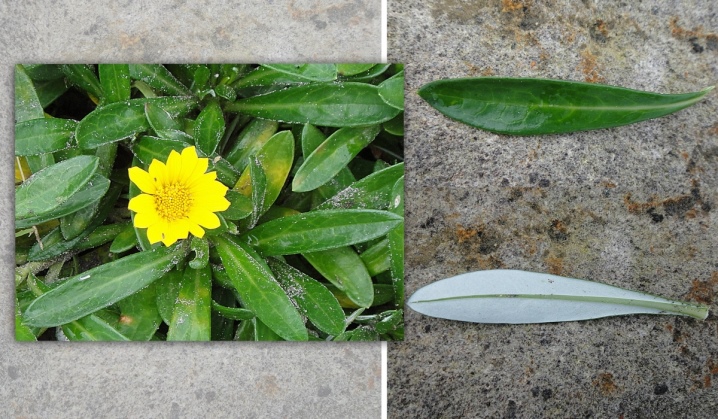
Bright gazania flowers and juicy matte leaves often attract the attention of pests. Signs of their appearance may be deformation, yellowing or twisting of the leaves, lack of flowering, as well as the presence of multiple holes in the leaves of gatsania.
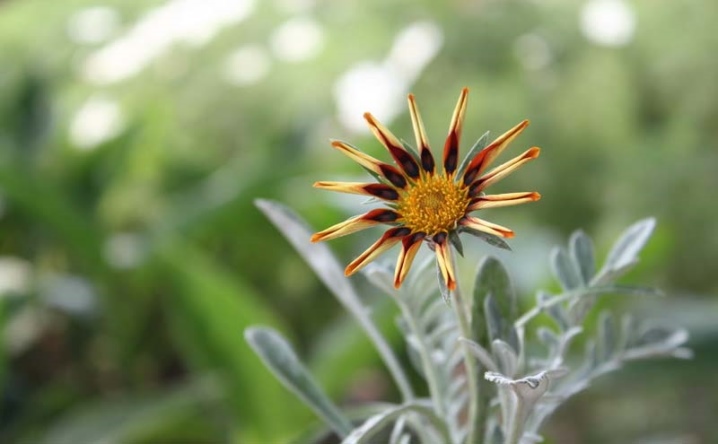
Among the pests of gazania, spider mites and aphids can be distinguished. From ticks, the shoots and inflorescences of gazanias are covered with a thin cobweb that blocks their development, and the aphids simply suck the juices from the leaves and shoots.

Another pest found on gazanias is garden snails or slugs - you can remove them by hand or create special beer baits.
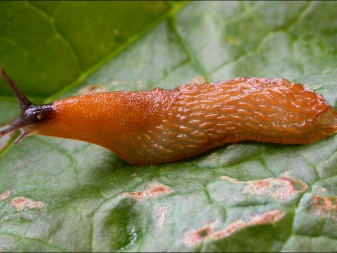
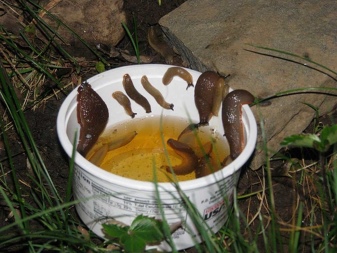
In the fight against insects, classic fungicides should help you: "Akarin" and "Fitoverm" against aphids, as well as "Fufanon" and "Ditox" against ticks.

If the leaves of your gazania just drooped, the reason may be a banal lack of moisture, as well as a lack or excess of sunlight.

Use in landscape design
Gazania flower beds can not only complement the landscape design of a summer cottage, but also become its highlight, because they bloom from mid-summer to late autumn. These plants look great both as single bushes and when planted in huge multi-colored flower beds.
These plants look best next to garden flowers such as rudbeckia, gypsophila, chamomile, venidum, ursinia and lobelia.
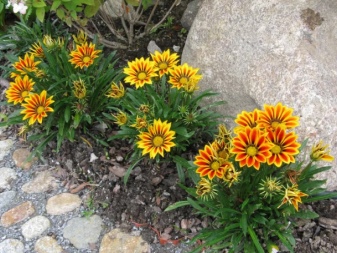

Planting gatsania near large shrubs and tall plants should be abandoned - the latter will take moisture from it and create shade. Also gazania can look great in the design of garden paths, alpine slides or rockeries.

In the next video, you will learn the secrets of planting gazania for a lush bush.


































































































The comment was sent successfully.